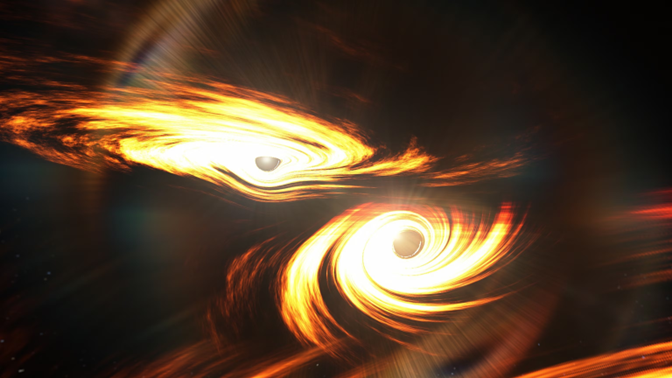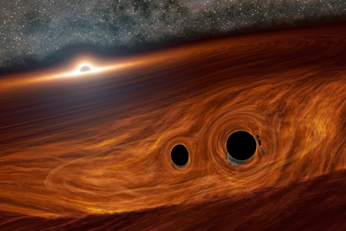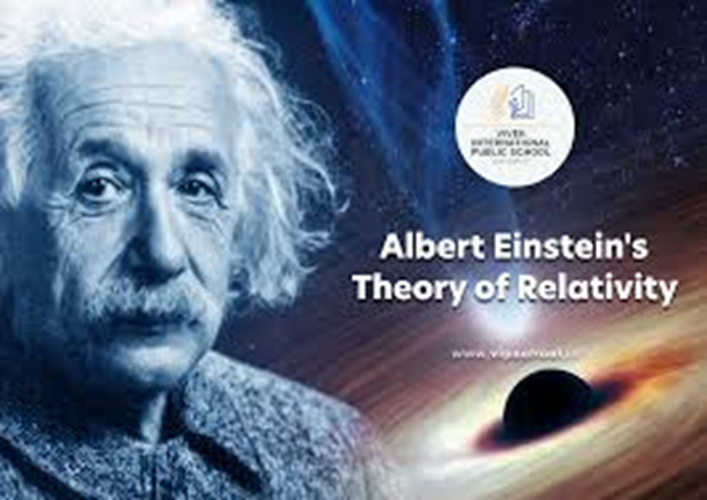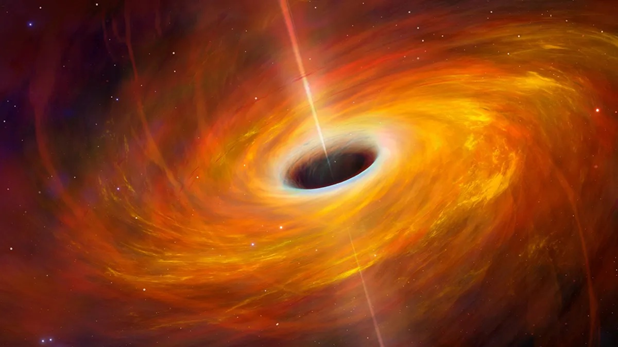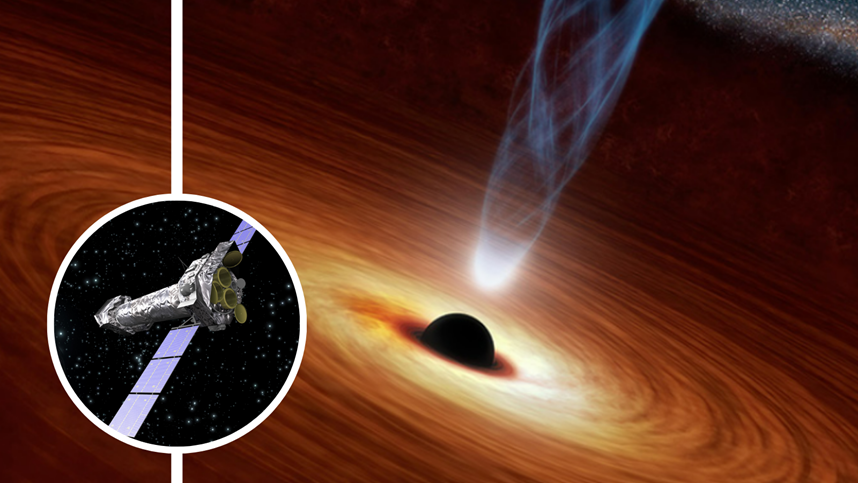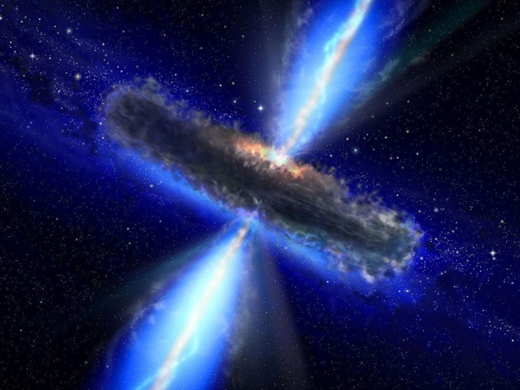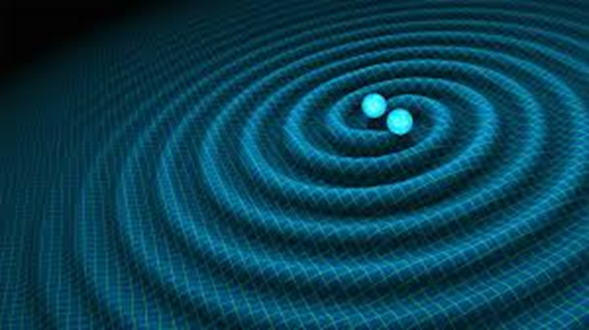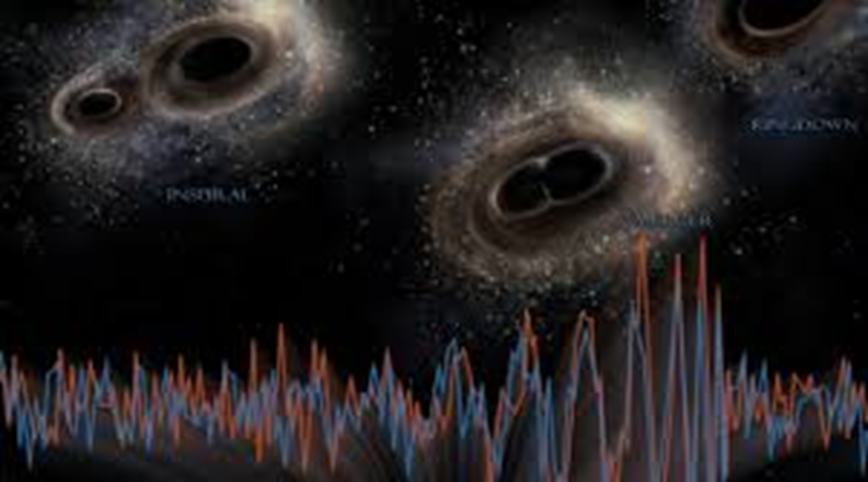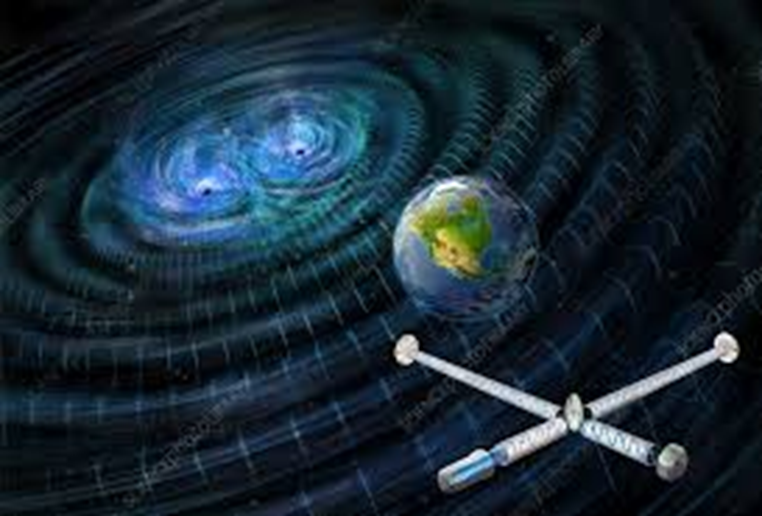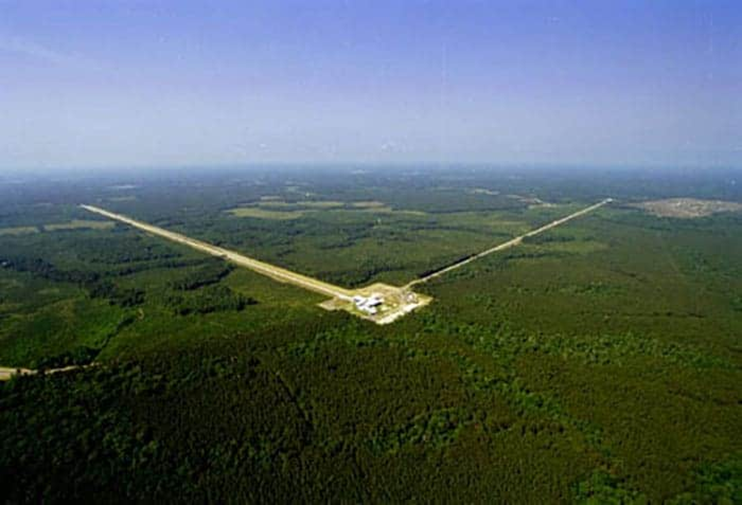Scientists have reported the discovery of gravitational waves from the merger of two black holes that are the biggest to have been observed in such an event. Black hole mergers are rare but some of the most spectacular events in the universe, releasing massive amounts of energy that are propagated to a very large distance through gravitational waves.
What Happens When Two Giant Black Holes Collide
Why In News
- Scientists have reported the discovery of gravitational waves from the merger of two black holes that are the biggest to have been observed in such an event. Black hole mergers are rare but some of the most spectacular events in the universe, releasing massive amounts of energy that are propagated to a very large distance through gravitational waves.
Black Hole Merger
- Gravitational waves are ripples in spacetime created by movements of massive objects, just like the movement of a boat in a lake produces ripples in water. But these are extremely weak, and only gravitational waves produced in very big events, like the merger of two black holes, can be detected by instruments on Earth.
- The existence of gravitational waves was proposed in Albert Einstein’s General Theory of Relativity in 1915. However, it was only in 2015, exactly 100 years later, that scientists were able to detect these for the first time, using extremely sensitive equipment at the two detectors built in the United States for this purpose, called the Laser Interferometer Gravitational Wave Observatory, or LIGO. Since then, scientists have discovered gravitational waves from hundreds of similar events.
What’s New This Time?
- In general, a black hole is a region in Space where the pulling force of gravity is so strong that neither matter nor light can ever escape. The latest discovery involves black holes that are more massive than any seen in previous such detections, and something that current theories find hard to explain.
- One of the black holes was 140 times the mass of the Sun in our solar system, the other 100 times bigger. Their merger resulted in a black hole that was about 225 times larger than the Sun. The previous record for such mergers detected through gravitational waves in 2021 involved black holes about 80 and 65 times larger than the Sun.
- Much bigger black holes do exist in the universe. Supermassive black holes are millions of times more massive than the Sun. However, what was surprising in the latest discovery was the fact that black holes in this specific size range, roughly between 100 and 150 times bigger than the Sun, are not expected to exist according to the prevailing knowledge.
- The stars that can produce black holes in this particular size range are currently understood to meet a different kind of end, and not end up collapsing into a black hole. Additionally, at least one of the black holes involved in the event was spinning at very high speeds, almost at the limit of what is possible under the General Theory of Relativity.
- For these reasons, the detection of gravitational waves from this event has generated a lot of scientific interest. It has the potential to refine the current understanding of black hole formation, the evolution of stars, and, possibly, the current models of the universe itself.
Studying Gravitational Waves
- Gravitational waves offer scientists a new way to glean information about the universe. Until it was first detected in 2015, scientists had to depend largely on the electromagnetic waves, like light, X-rays or radio waves, to study the universe. But most of the universe comprises of dark matter and dark energy, which do not interact with electromagnetic waves.
- These areas, and the events that happen therein, are therefore ‘invisible’ to traditional measuring devices like telescopes. Black holes were a classical example. Scientists knew they existed, but could not ‘see’ them. Detection of gravitational waves has provided a new tool to detect and study them.
- Gravitational waves are generated by all moving objects in the universe, though only those that are produced by sufficiently large events are strong enough to travel very large distances and get detected by gravitational wave detectors on Earth. But they still offer information that was hitherto unavailable to the scientists. Gravitational waves, thus, provide a new ‘vision’ to scientists to view and study the happenings in the universe.
LIGO’s Capabilities
- The first detection of gravitational waves, in 2015, was made by the two observatories in the United States. After that, a few more observatories have come up, notably the Virgo detector in Italy and the KAGRA (Kamioka Gravitational Wave Detector) in Japan. Together, these are known as the LVK collaboration. The latest discovery has come from this collaboration.
- Incidentally, the LIGO is proposed to have a third observatory, this one in India, to be called the LIGO-India observatory, but its construction is running way behind schedule.
- It was originally supposed to begin operations in 2024, but a final government approval earmarking Rs 2,600 crore for the project came only in 2023. The Department of Atomic Energy, which is handling the project, has selected a site in the Hingoli district of Maharashtra to set up this observatory. As per the latest information, the construction of the project is expected to start later this year and be completed by April 2030.
